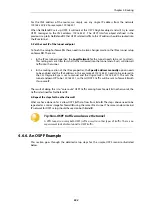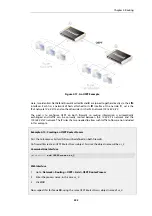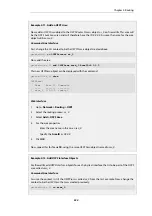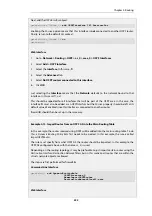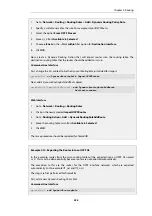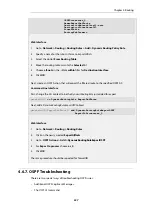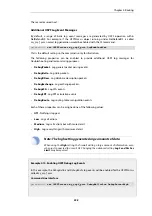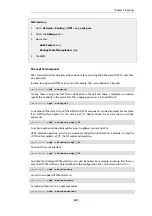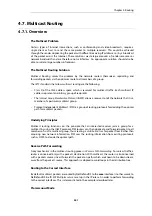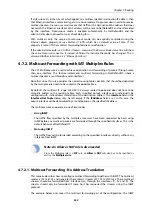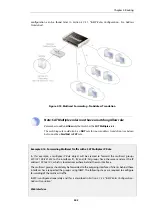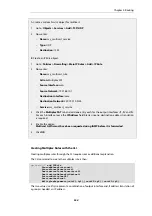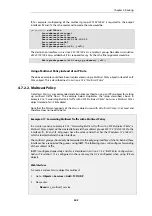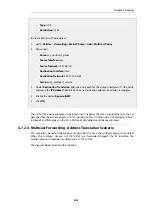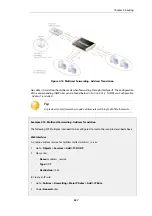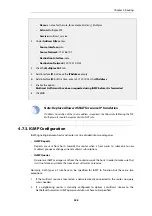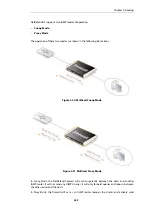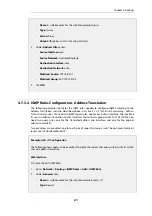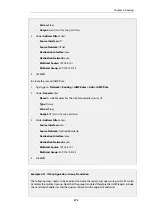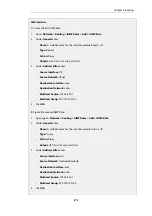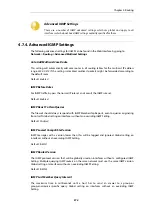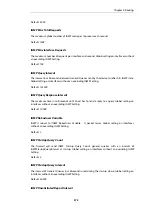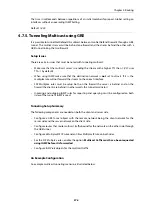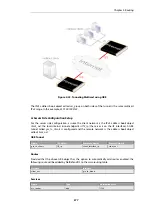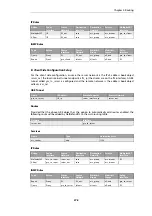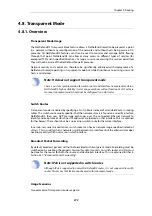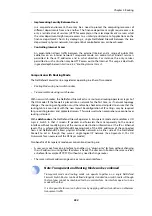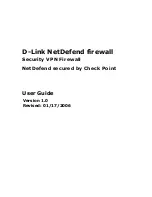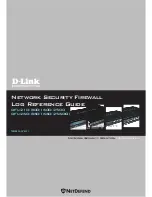
If, for example, multiplexing of the multicast group
239.192.100.50
is required to the output
interfaces
if2
and
if3
, then the command to create the rule would be:
gw-world:/> add IPRule
SourceNetwork=<srcnet>
SourceInterface=<if1>
DestinationInterface=core
DestinationNetwork=239.192.100.50
Action=MultiplexSAT
Service=<service>
MultiplexArgument={if2;},{if3;}
The destination interface is
core
since
239.192.100.50
is a multicast group. No address translation
of
239.192.100.50
was added but if it is required for, say,
if2
then the final argument would be:
MultiplexArgument={if2;<new_ip_address>},{if3;}
Using a Multicast Policy instead of an IP Rule
The above example could have been implemented using a
Multicast Policy
object instead of an
IP
Policy
object. This is described next in
Section 4.7.2.2, “Multicast Policy”
4.7.2.2. Multicast Policy
A
Multicast Policy
is a recommended and alternative method to using an
IP Rule
object for setting
up multicast traffic flows. The example below duplicates the setup described above in
Example 4.16, “Forwarding Multicast Traffic with a SAT Multiplex IP Rule”
but uses a
Multicast Policy
object instead of an
IP Rule
object.
Note that the
Protocol
property of the
Service
object used with a
Multicast Policy
is not used and
therefore does not need to be set.
Example 4.17. Forwarding Multicast Traffic with a Multicast Policy
In a similar scenario to
Example 4.16, “Forwarding Multicast Traffic with a SAT Multiplex IP Rule”
, a
Multicast Policy
object will be created to forward the multicast groups
239.192.10.0/24:1234
to the
interfaces
if1
,
if2
and
if3
. All groups have the same sender that has the IP address
192.168.10.1
,
which is located behind the wan interface.
The multicast groups should only be forwarded to the outgoing interfaces if clients behind those
interfaces have requested the groups using IGMP. The following steps will configure forwarding
of the multicast traffic.
IGMP is configured separately and this is described in
Section 4.7.3.2, “IGMP Rules Configuration -
. It is configured in the same way that it is configured when using
IP Rule
objects.
Web Interface
A. Create a custom
Service
object for multicast:
1.
Go to: Objects > Services > Add > TCP/UDP
2.
Now enter:
•
Name: my_multicast_service
Chapter 4: Routing
365
Summary of Contents for NetDefendOS
Page 30: ...Figure 1 3 Packet Flow Schematic Part III Chapter 1 NetDefendOS Overview 30 ...
Page 32: ...Chapter 1 NetDefendOS Overview 32 ...
Page 144: ...Chapter 2 Management and Maintenance 144 ...
Page 284: ...Chapter 3 Fundamentals 284 ...
Page 392: ...Chapter 4 Routing 392 ...
Page 419: ... Host 2001 DB8 1 MAC 00 90 12 13 14 15 5 Click OK Chapter 5 DHCP Services 419 ...
Page 420: ...Chapter 5 DHCP Services 420 ...
Page 573: ...Chapter 6 Security Mechanisms 573 ...
Page 607: ...Chapter 7 Address Translation 607 ...
Page 666: ...Chapter 8 User Authentication 666 ...
Page 775: ...Chapter 9 VPN 775 ...
Page 819: ...Chapter 10 Traffic Management 819 ...
Page 842: ...Chapter 11 High Availability 842 ...
Page 866: ...Default Enabled Chapter 13 Advanced Settings 866 ...
Page 879: ...Chapter 13 Advanced Settings 879 ...


